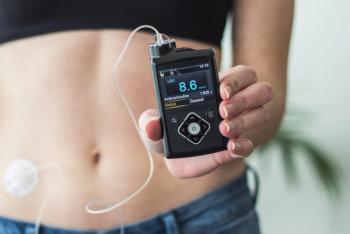
New Developments in Treating and Diagnosing COPD
Imaging techniques, stem cell therapy, and more!
Research continues to explore new ways to diagnose and treat COPD. In their role as easily accessible medication experts, pharmacists can serve as a valuable resource for COPD patients, providing information about the latest therapies.
“New therapies such as valve surgery, blood tests for targeted therapy, and stem cell trials do not directly apply to pharmacists since they are medical procedures rather than medications,” says Lydia Wang, PharmD, a clinical pharmacist coordinator with Atrium Health. “However, pharmacists still play a role in being knowledgeable about these new therapies to better counsel and educate both patients and providers when selecting an individualized course of treatment for patients.”
New developments in treating COPD are happening on several fronts. Research is exploring ways to diagnose COPD early on, before significant damage is done. One line of recent
Stem cell therapy and less invasive methods of surgery are also being studied. Standard surgery to remove damaged lung sections previously required a large chest incision, but
“More applicable to pharmacy practice are new therapies such as injectable medications, inhalers and other inhaled medications, and oral medications,” says Wang. “Pharmacists have a direct role in helping patients and providers select the most efficacious and applicable medication that is affordable to patients, as well as counseling on proper administration, side effects, and disposal.”
Trending:
COPD patients may have been prescribed multiple, potentially confusing medications, primarily inhalers, to treat symptoms, which can lead to misuse and prohibitively expensive therapy. Patients may not be aware that COPD medications, such as long-acting beta-2 agonists (LABAs) and long-acting muscarinic antagonists (LAMAs), can now be used together, with combinations of more than one drug present in one inhaler.
“Not only can pharmacists provide extensive education and counseling about the disease state and medications, pharmacists play a crucial role in recommending guideline-directed, evidence-based medications to patients and providers to optimize medication regimens,” says Wang. “Finally, pharmacists are able to stay up to date on the latest innovations in medications, such as new inhaler devices and combination therapies that come to market, which can lower costs for patients and improve adherence.”
COPD patients may also benefit from
“As pharmacists gain a greater role in the primary care setting, especially as mid-level practitioners who can help perform spirometry testing, select therapies, and offer pharmacologic and nonpharmacologic counseling, it is increasingly important for pharmacists to be aware of and knowledgeable of non-medication therapies, such as pulmonary rehab,” says Wang. “Pharmacists play a large role in realizing and recommending pulmonary rehab when appropriate, which can greatly improve patients’ COPD control.”
Newsletter
Pharmacy practice is always changing. Stay ahead of the curve with the Drug Topics newsletter and get the latest drug information, industry trends, and patient care tips.




































































































































